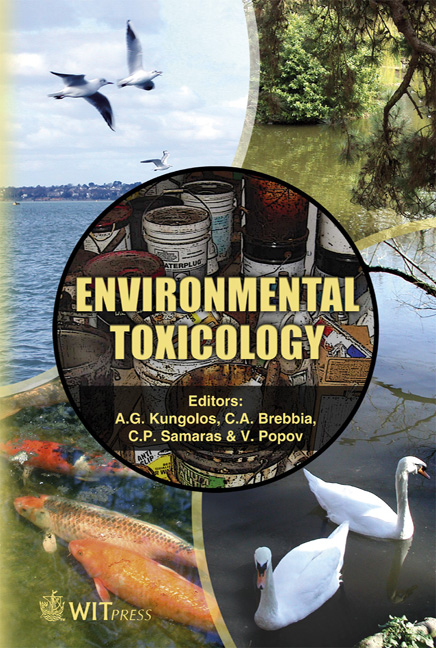Toxicity Of Atmospheric Particulate Matter Using Aquatic Bioassays
Price
Free (open access)
Transaction
Volume
10
Pages
9
Published
2006
Size
810 kb
Paper DOI
10.2495/ETOX060041
Copyright
WIT Press
Author(s)
C. Papadimitriou, V. Evagelopoulos, P. Samaras, A. G. Triantafyllou, S. Zoras & T. A. Albanis
Abstract
The investigation of ecotoxicological effects of particulate matter and the increasing interest in correlating chemical composition to biological impacts is of paramount importance. A complete assessment of biological impacts will require a broad look at the effects of human health and the terrestrial and aquatic environments. The objective of this work was to assess the effects of various sizes of particulates on aquatic organisms. Samples were collected from filters and the filter contents were extracted with DCM using a Soxhlet extractor. Then concentration DCM extracts were condensated to 2 ml by rotary evaporation and each millilitre of extract was exchanged with 1 ml of DMSO and then diluted to freshwater. The samples were then analyzed for their ecotoxicological properties with Vibrio fischeri and bioassay. Five consecutive dilutions of the sample were tested in order to determine the EC50 values as a result of different size of particulates. Keywords: PM10, PM2.5, particulates, toxicity, bioassays. 1 Introduction The knowledge of the distribution of airborne particulate matter (PM) into size fractions has become an increasing area of focus during the examination of the
Keywords
PM10, PM2.5, particulates, toxicity, bioassays.





